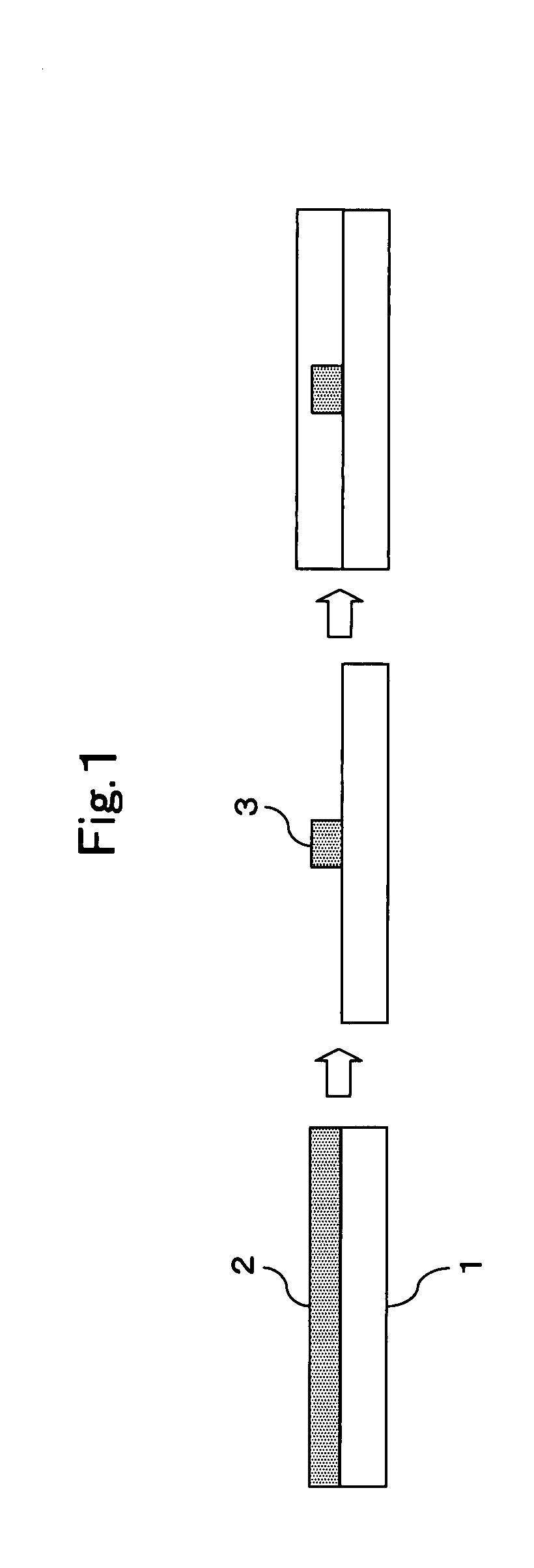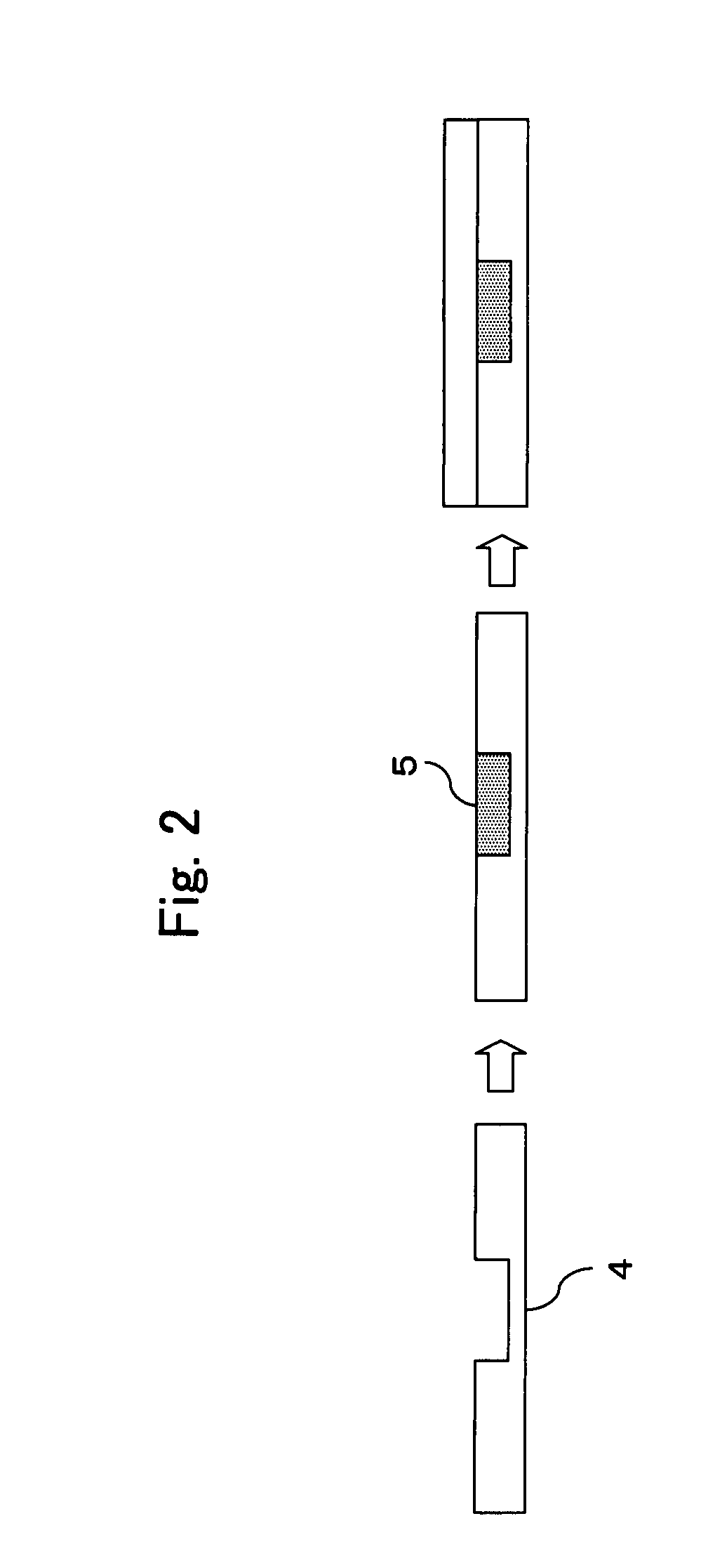Production method of polyimide solution and fluorinated polyimide solution
a technology of polyimide solution and polyamide acid solution, which is applied in the direction of optical elements, instruments, optics, etc., can solve the problems of deterioration of quality and known idea of using polyimide solution as varnish in place of polyamide acid solution, and achieve the effect of not causing the reduction of molecular weight of polyimid
- Summary
- Abstract
- Description
- Claims
- Application Information
AI Technical Summary
Benefits of technology
Problems solved by technology
Method used
Image
Examples
production example 1-1
Production of Polyamide Acid Solution
[0090]To a 100 mL three neck flask, 1,3-Diamino-2,4,5,6-tetrafluorobenzene (4.48 g, 24.92 mmol), 4′-[(2,3,5,6-tetrafluoro-1,4-phenylene)bis(oxy)](3,5,6-trifluorophthalic anhydride) (14.51 g, 24.92 mmol), and N,N-dimethylacetamide (31 g) were charged. The mixed solution was stirred at room temperature in nitrogen atmosphere to obtain a homogenous solution, and then was kept still for 4 days to obtain a polyamide acid solution. The viscosity of the obtained solution was measured by a viscometer (RC 20-CPS, manufactured by Rheotech Co., Ltd.) to find it was 16.0 Pa·S.
production example 1-2
Production of Polyimide Solution
[0091]The polyamide acid solution (20 g) obtained in the above Production Example 1-1 was transferred to a 100 mL container made of polypropylene. To the solution, further 1,4-diazabicyclo[2,2,2]octane (0.03 g, 0.27 mmol) and acetic anhydride (2.0 g, 19.59 mmol) was added, and the mixture was stirred by a rotation-revolution mixer (AR-250, Thinky Co., Ltd.) in a stirring mode for 10 minutes and in a defoaming mode for 5 minutes to carry out rapid mixing. Then the mixture was kept still for 24 hours to carry out imidation. At that time, the revolution speed was 2,000 rpm and the rotation speed was 800 rpm in the stirring mode, and the revolution speed was 2,200 rpm and the stirring speed was 60 rpm in the defoaming mode. The sample holder was slanted at 45° to the rotation axis.
[0092]The viscosity of the obtained polyimide solution was measured in the same manner as the above Production Example 1-1 to find it was 18.0 Pa·S. The solution was seemed to b...
production example 2-1
Production of Polyamide Acid Solution
[0093]To a 100 mL three neck flask, 2,2′-Bis(trifluoromethyl)-4,4′-diaminobiphenyl (4.83 g, 15.67 mmol), 4,4′-[(2,3,5,6-tetrafluoro-1,4-phenylene)bis(oxy)](3,5,6-trifluorophthalic anhydride) (8.77 g, 15.07 mmol), and N,N-dimethylacetamide (66.4 g) were charged. The mixed solution was stirred at room temperature in nitrogen atmosphere to obtain a homogenous solution, and then was kept still for 2 days to obtain a polyamide acid solution. The viscosity of the obtained solution was measured in the same manner as the above Production Example 1-1 to find it was 19.5 Pa·S.
PUM
| Property | Measurement | Unit |
|---|---|---|
| Viscosity | aaaaa | aaaaa |
| Solubility (mass) | aaaaa | aaaaa |
Abstract
Description
Claims
Application Information
 Login to View More
Login to View More - R&D
- Intellectual Property
- Life Sciences
- Materials
- Tech Scout
- Unparalleled Data Quality
- Higher Quality Content
- 60% Fewer Hallucinations
Browse by: Latest US Patents, China's latest patents, Technical Efficacy Thesaurus, Application Domain, Technology Topic, Popular Technical Reports.
© 2025 PatSnap. All rights reserved.Legal|Privacy policy|Modern Slavery Act Transparency Statement|Sitemap|About US| Contact US: help@patsnap.com



